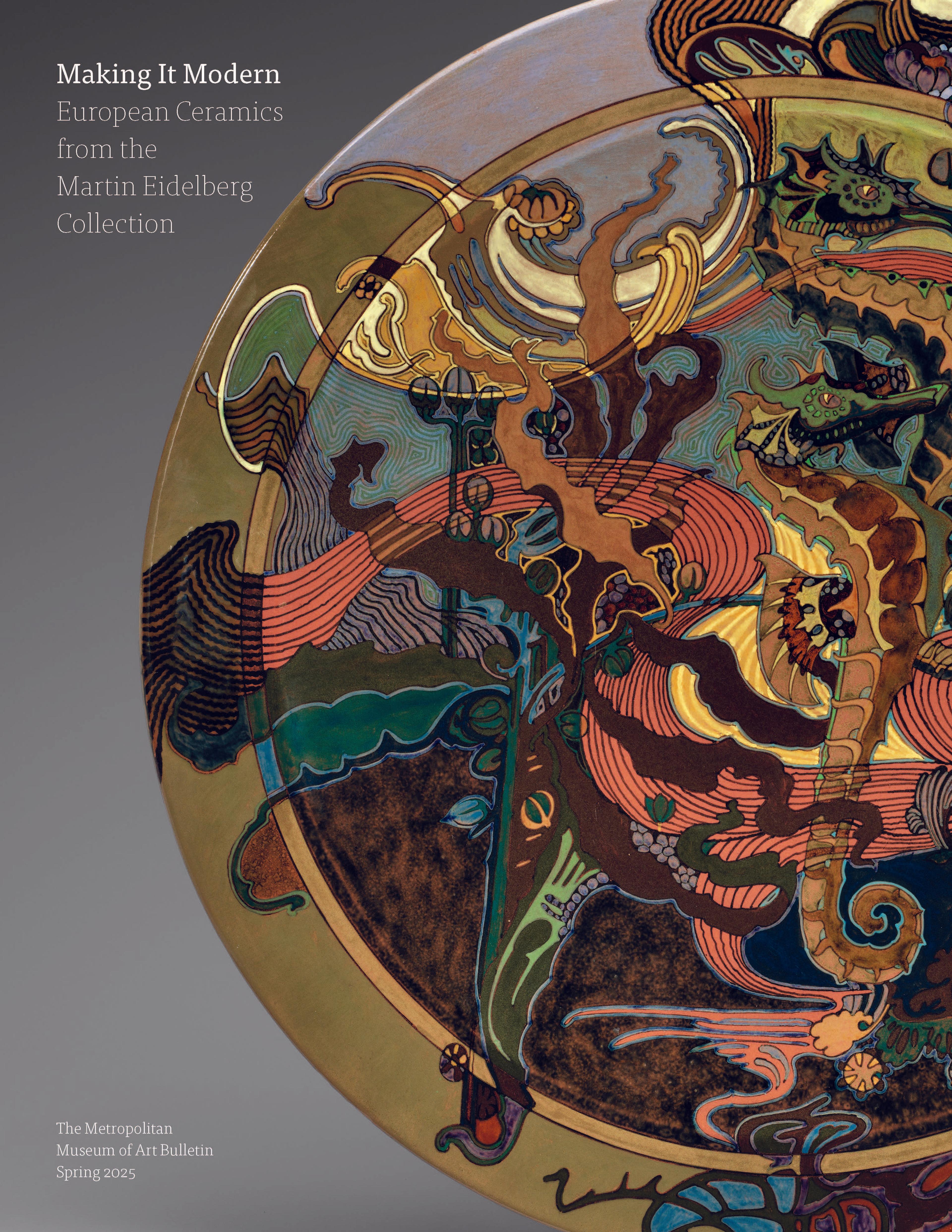Vase Cerny
Art Nouveau ceramics, produced from around 1880 to 1914, the start of World War I, encompassed a variety of different styles and influences, including national historicism, nature, symbolism, and an interest in Japanese culture. The period’s diverse practitioners were driven by the search for new forms that responded to the sweeping social, cultural, economic and artistic changes wrought by industrialization at the end of the nineteenth century and the advent of World War I. The talented architect Hector Guimard was a major proponent of the Art Nouveau style. A prolific designer of urban forms, notably the entrances to Paris’s glamorous new transit system, Guimard was commissioned by Sèvres national manufactory to create new models that would debut at the 1900 World Exposition in Paris, including the Vase de Cerny, which celebrated the design elements of Art Nouveau.
Artwork Details
- Title:Vase Cerny
- Designer:Hector Guimard (French, Lyons 1867–1942 New York)
- Manufactory:Sèvres Manufactory (French, 1740–present)
- Date:ca. 1901
- Culture:French, Sèvres
- Medium:Glazed stoneware
- Dimensions:confirmed: 10 13/16 × 5 1/4 × 5 1/4 in. (27.5 × 13.3 × 13.3 cm)
- Classification:Ceramics-Pottery
- Credit Line:Gift of Martin Eidelberg, 2024
- Object Number:2024.450.10
- Curatorial Department: European Sculpture and Decorative Arts
More Artwork
Research Resources
The Met provides unparalleled resources for research and welcomes an international community of students and scholars. The Met's Open Access API is where creators and researchers can connect to the The Met collection. Open Access data and public domain images are available for unrestricted commercial and noncommercial use without permission or fee.
To request images under copyright and other restrictions, please use this Image Request form.
Feedback
We continue to research and examine historical and cultural context for objects in The Met collection. If you have comments or questions about this object record, please contact us using the form below. The Museum looks forward to receiving your comments.
